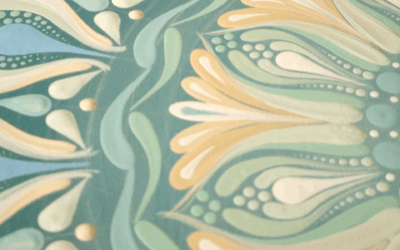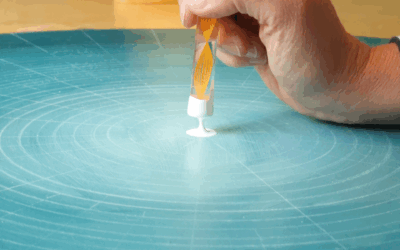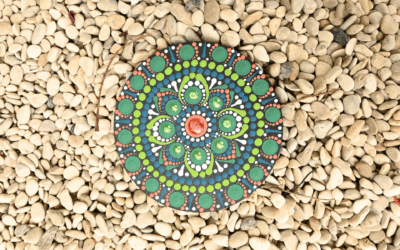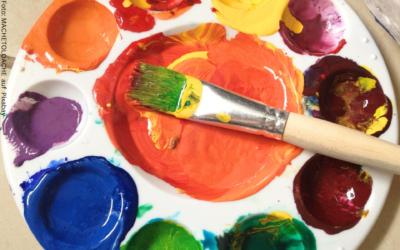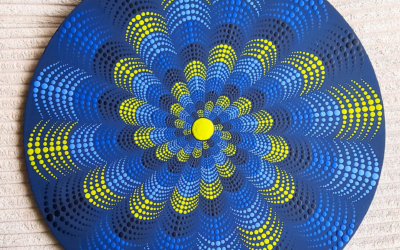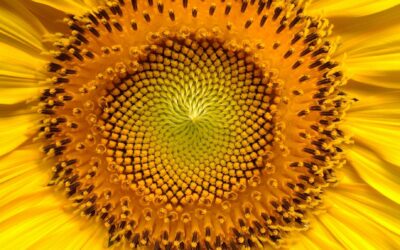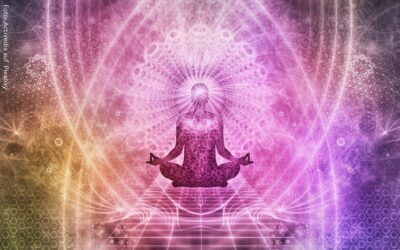JayJay’s Blog
My takeaways from painting mandalas (Part 4): the power of repition
Mandala painting is more than creative expression – it is a state of mind. As soon as a pattern begins to repeat itself, something changes within me: I become calmer, my head clears and my focus shifts entirely to the here and now. Without thinking too much, I follow the rhythm point by point – and often find more inner peace than in a whole day full of to-dos. ...
My takeaways from painting mandalas (Part 3): mindfulness over rushing
For me, mandala painting is not only a creative process, but also a school of mindfulness. While much of today's world is spinning faster and faster and efficiency often takes precedence over everything else, creating a mandala is a conscious decision to slow down. Step by step, something big emerges – but never in a hurry.
My takeaways from painting mandalas (Part 2): the journey from the inside out
Mandala painting follows a clear, almost meditative structure: you start in the middle and work your way outwards, layer by layer. This creative process has taken on a deeper meaning for me – it's like embarking on a little journey each time, which begins inside and unfolds outwards.
My takeaways from painting mandalas (Part 1): perfect imperfection
perfect?’ But they are not perfect – at least not in the sense of absolute symmetry or millimetre-precise spacing. What makes them appear harmonious is not the perfection of each individual dot or strokes, but the overall picture created by the ...
The meaning of colours in mandalas: intuition, effect and interior design
Colours play an essential role in art. They not only influence the visual appearance of a work, but also its effect on the viewer. Colours have a special power in mandalas, as they harmonise with their symmetrical structure and can intensify emotions. But how do I find the right colours for my works? I don't rely on fixed rules, but...
My journey to mandala art: how it all started
Sometimes you discover something by chance - and suddenly you can't let it go. That's exactly how it was when I first saw mandala painting using the dot painting technique on Instagram. The artistic patterns made up of countless dots had a fascinating effect on me. I knew immediately: I want to be able to do that too! ...
The history of mandalas: from ancient traditions to modern art
Mandalas have a history stretching back thousands of years. They can be found in a range of different cultures and religions and have developed over time from spiritual symbols into artistic and therapeutic tools. Their meaning has expanded over the centuries, but the basic idea – a circular pattern that expresses order and harmony – remains unchanged.
The effect of mandalas on the autonomic nervous system
Mandalas have a profound effect on the autonomic nervous system (ANS), which is responsible for the regulation of many unconscious bodily functions such as heartbeat, breathing and digestion. The ANS consists of two main branches: the sympathetic nervous system (activating, ‘fight-or-flight’ reaction) and the parasympathetic nervous system (relaxing, ‘rest-and-digest’ reaction).
Sacred geometry: the language of patterns and shapes
Sacred geometry is a concept that plays a central role in many cultures and traditions around the world. It deals with the shapes, patterns and proportions found in nature, architecture and art. Many of these geometries are considered fundamental building blocks of creation and are often associated with spiritual or cosmic meaning. What is sacred geometry?
Spirituality – breath of life
Spirituality – what does that exactly mean? The term is often associated with religion, meditation or esoteric practices. But spirituality is much more than that: it is a universal experience that each of us can have in our own way. To understand the essence of spirituality, it is worth taking a look at its linguistic root. The Latin word...
The magic of mandalas
The art of mandalas is much more than a visual experience – it is a journey into the depths of the soul and a key to inner harmony. These ancient geometric patterns have a mystical quality that has been appreciated for centuries in different cultures around the world. But what makes mandalas so magical?
